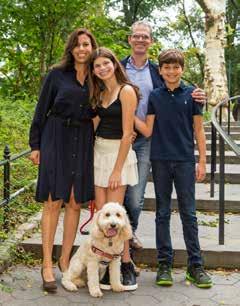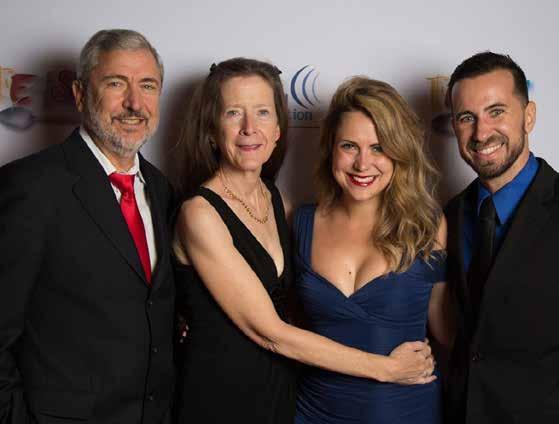in memoriam
h ear i ng health foundation
In Memoriam: Bryan Pollard of Hyperacusis Research By the Board of Hyperacusis Research We, the board of Hyperacusis Research, are devastated to report that Bryan Pollard, our founder and shining star, has died at age 57. We are taking this opportunity in the pages of our partner Hearing Health Foundation’s magazine to remember Bryan and his contributions to the field of hyperacusis research. Bryan single-handedly created an entirely new diagnosis in the field of otology—pain hyperacusis—and worked tirelessly on behalf of those who suffered from it. Bryan himself had a noise injury, with symptoms appearing after exposure to a wood chipper removing a tree in his yard. Like many with this kind of noise injury, Bryan was unable to get answers from the doctors he saw. Unlike many, he took action, starting the nonprofit Hyperacusis Research in 2011 and becoming the first non-researcher to present at the Association for Research in Otolaryngology conference, prompting researchers to take seriously the condition of being unable to tolerate everyday noise levels without discomfort or pain. “Bryan was a force of nature,” says Michael Maholchic, who has assumed the presidency of Hyperacusis Research and will carry on the work with the help of the board. This includes our partnership with Hearing Health Foundation and its Emerging Research Grants program. Bryan not only created a new diagnosis, he had to reverse years of the clinical community’s misunderstanding about hyperacusis. Especially important was his influence on changing the harmful myth that quiet was bad for patients with hyperacusis, and his emphasis on the importance of avoiding setbacks, which result from additional noise exposure. He was always responsive to those who sought his counsel and advice. He was all too aware that pain—a key component of this kind of noise-induced injury—was barely mentioned. This is why he used “noise-induced pain,” modeled on the term “noise-induced hearing loss,” in order to make the concept of hyperacusis more understandable to everyone in the fields of audiology and otology. He was also aware that 6
hearing health
hhf.org
Bryan Pollard, second from right, with (from left) Betsy Maholchic, Leslie Liberman, Charlie Liberman, Ph.D., and Michael Maholchic, at a Mass Eye and Ear event in 2017. Liberman is head of an otology research lab at Harvard Med School and Mass Eye and Ear, and Michael Maholchic has assumed the presidency of Hyperacusis Research.
the conventional wisdom passed around to people with hyperacusis—that there was no need to protect against noise—was harmful to many. Patients wanted substantive research into their condition, and Bryan was instrumental in making that happen. He wrote several pieces for professional journals, articles that sufferers found incredibly helpful as they faced a skeptical medical community. In his article “Unraveling the Mystery of Hyperacusis With Pain,” published in ENT & Audiology News in 2019, he noted that the pain component had previously been completely overlooked as part of hyperacusis. The mission was not just to propel a nascent field forward. Bryan had to turn it around first, and he did so with grace and patience. He emphasized the individual and heterogeneous nature of the condition, with the same noise dose having no effect on some people but causing life-














